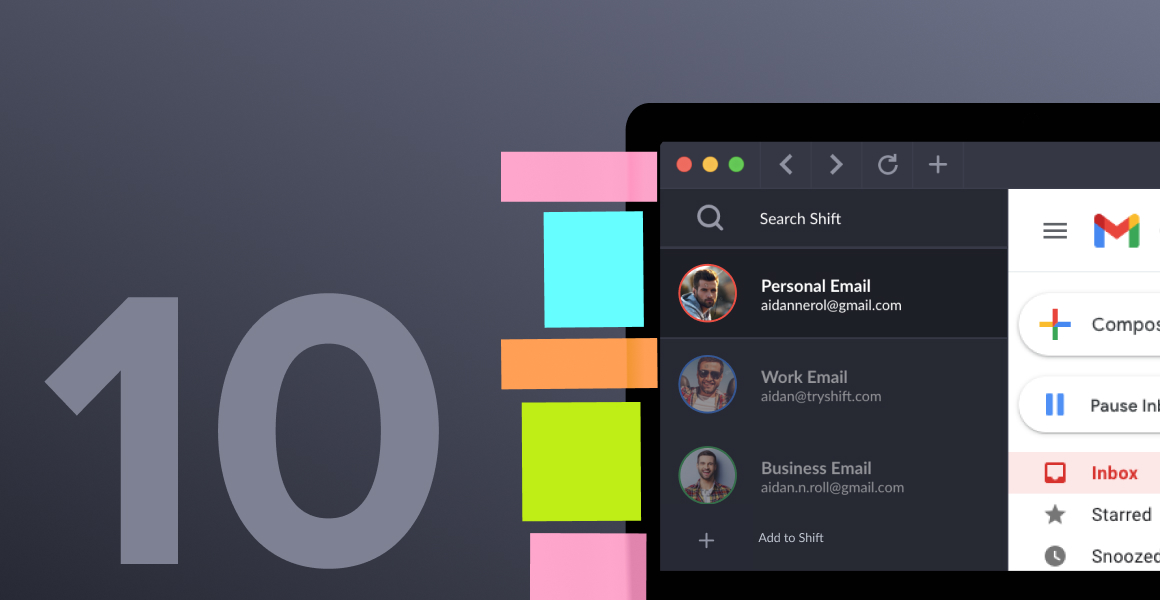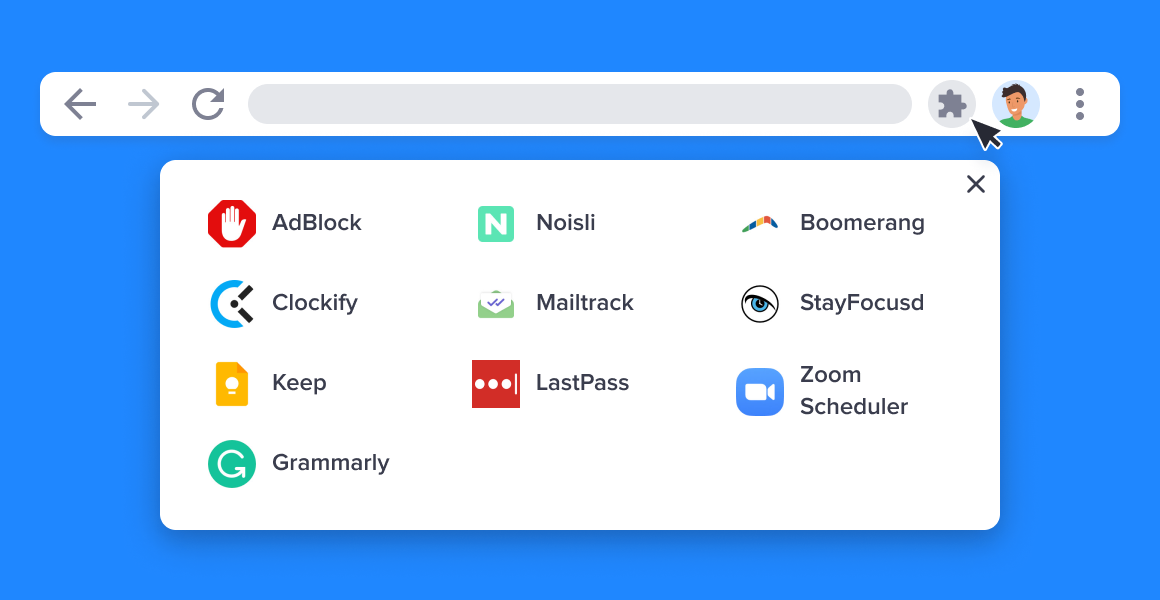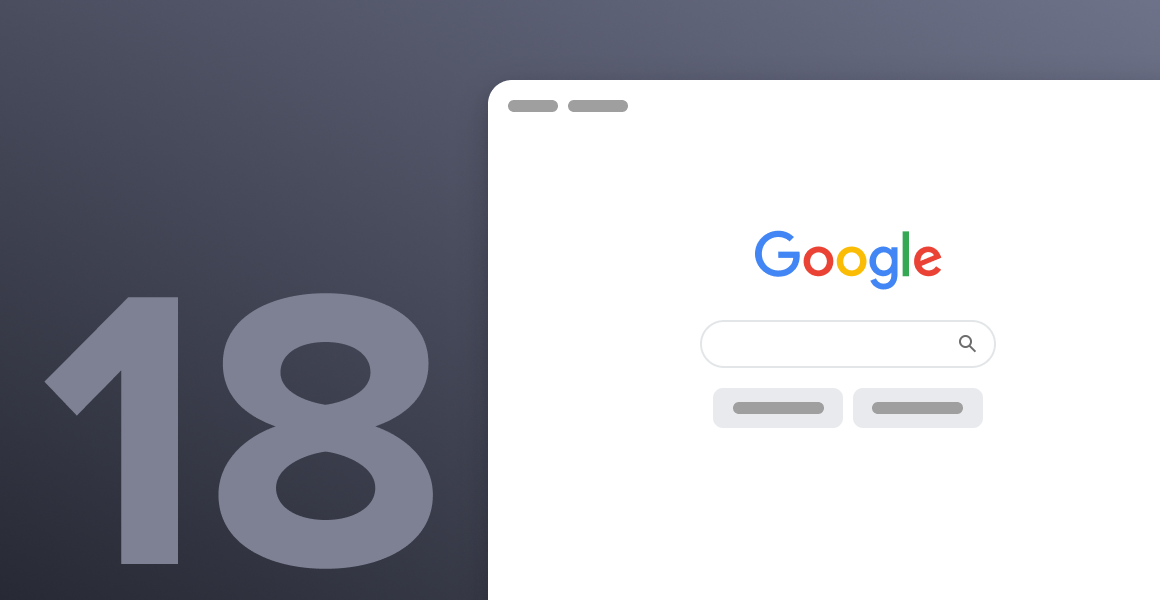In today’s ultra-digital age, we spend a huge amount of time online. Most of us have the goal of becoming more organized in general - but that’s not always easy when using tools that can quickly facilitate distraction.
Fortunately, the minds behind today’s web browsers understand the common conundrum. Modern web browsers offer a plethora of tools and features that can significantly impact our time spent online. In this article, we’re exploring several features that can enhance your efficiency, plus valuable tips on becoming more effective at all of your online endeavors.
Manage tabs effectively
Tabs are the foundation of any web browser, allowing us to multitask and access multiple websites simultaneously. It’s nearly impossible to optimize the time you spend online if you’re not leveraging tabs efficiently. According to research from PCWorld, “browser clutter” is a serious concern for about 25% of people (and a “mild” concern for 57%). The average person has 5 to 10 tabs open at once, across up to 3 browsers - however, the highest number of tabs cited in the study was 400! Everyone has a different tolerance for tabs, but if you find yourself annoyed, that means you have too many open.
To make the most of this particular browser feature, try the following:
- Utilize tab grouping or tab stacking features to organize related websites together, reducing clutter and improving navigation. For example, Chrome and Edge browser users can make use of the built-in tab group feature, which allows people to cluster together tabs that are related to the same topic (and then collapse the group when not in use).
- Make use of keyboard shortcuts like Ctrl+T (Cmd+T on Mac) to open new tabs swiftly, Ctrl+Tab (Cmd+Option+Right Arrow on Mac) to switch between tabs, and Ctrl+W (Cmd+W on Mac) to close tabs efficiently. For a comprehensive list on keyboard shortcuts that can speed up your browsing time, check out our article on browser hacks.
- In some browsers, you can right-click on a tab and select "Pin Tab" to keep frequently accessed websites open in a smaller, more compact form.
- Add an ad-blocking browser extension and add them to your system’s approved list, in order to limit interruptions while in a tab. These ad-blockers should require minimal maintenance and can improve your browsing experience.
Related Post: Too Many Tabs Open? Try These Browser Management Tips
Manage bookmarks better
Bookmarks enable us to quickly access our favorite websites, saving valuable time. While tabs are the first place that people usually start when organizing their digital experience, many people overlook the versatility of online bookmarks. Optimizing your bookmarks will significantly increase the things you can do online in a short time. The best way to manage bookmarks is different for each browser. In general, though, you can start by implementing a few best practices. Enhance your bookmarking experience with these suggestions:
- Start by deleting the bookmarks you don’t need. Obviously, as you add more bookmarks, it’ll take more time to find the ones you’re looking for when you need them. This increases the amount of time that you spend looking for something, and not actually working on it. Go through your list and start taking out the bookmarks that you don’t need or even use often. Chances are, you’ll come across a few that may have been important at one time but no longer are, or older versions of pages that are obsolete now.
- From there, create bookmark folders based on categories or priority, making them easier to find. Most people find relevant categories to be work, personal, vacation, recipes, style, etc. From there, especially for work, you’ll go down another level and organize by function, account, or project.
- You can then organize those folders into other folders based on groupings. For example, if you have several client folders, they would all go into the “work” category. One of the simplest ways to manage bookmarks within a folder is by alphabetical order. This makes sorting and finding them more intuitive and streamlined.
- Take advantage of the bookmark syncing feature across multiple devices, ensuring your bookmarks are accessible wherever you go.
- Some browsers have a bookmark search function that can also help you to find what you need more easily. For example, in Chrome you can use the search bar just above the list of bookmarks.
- We also suggest creating a “temporary” folder for bookmarks that you are using now, but won’t in the future, or for other items that will not need to be bookmarked permanently. Save bookmarks that you don’t want to permanently categorize there until you decide what to do with them permanently.
- Free up space (for even more bookmarks) by removing bookmark names and relying on the visual icon. For example, most people automatically know that the blue “f” is for Facebook - do you need the word Facebook spelled out next to it? Free up that space when you know the icon by heart, and you can squeeze in a few more within your view.
- Finally, it often makes sense to import bookmarks from one browser into another. Some people have a strong differentiation between work and personal browsers, but if you don’t, then it makes more sense to keep everything in one view. You can import your Chrome browsers to other ones, and vice versa. You should be able to find detailed instructions on how to do this in the FAQ or support section for your preferred browser.
Related Post: 10 Browser Hacks to Simplify Your Life
Add browser extensions (sparingly)
Browser extensions are powerful tools that can enhance functionality and productivity. You’ll want to address your specific needs and see which ones will be most helpful. What are your goals? Do you want help with time management, collaboration, task tracking? Or, do you just want to block ads? Regardless, there are a number of extensions offered for each browser; there’s something for everyone. On the other hand, going nuts with ad blockers can slow down your browsing experience and take up space on your computer. We suggest starting with an extension for each of the following:
- Ad blockers: Block intrusive ads and distractions, allowing for a smoother browsing experience.
- Password Managers: Securely store and autofill passwords, removing the need to remember multiple login credentials.
- Note-taking extensions: Capture and save ideas, snippets, or important information while browsing.
- Productivity trackers: Monitor and analyze your internet usage, helping you identify time-wasting activities and improve focus.
Related Post: The 10 Best Browser Extensions
Maximize search engines
Effective search is one of the most impactful areas of browser performance. After all, finding information is one of the main functions of your browser. In addition to the basic search functionality, browsers offer advanced search features to help you find relevant information more efficiently. Here are some of our favorite tips for getting the most bang for your search buck:
- Use longer keyword phrases for a more concise match. The more specific you can be, the more likely you are to find a match that is relevant.
- Block publishers that are unhelpful. Depending on the types of things you search, you might run into the same types of sites that don’t actually offer anything valuable to you. In those cases, make a habit of blocking them from your future searches.
- If you just want to search for information on an image, then skip searching with words and use the camera button to add an image to your search bar. From there Google will crawl the internet for your image.
- Understand “stop” words. They are words that Google discards before performing a search. Common stop words are a, they, be, how, to, and it. In some cases, skipping these words can make your overall search faster and speed things up.
- If you’re not sure exactly what you need to search for, but the words seem on the tip of your tongue, try using the thesaurus feature. You can use the “~” symbol to automatically include similar words.
- If you are trying to track down information that you know is on a specific site, for example when searching a study from a medical journal, then you can add “site:” and the name of the site at the end of your search. Then Google will only crawl content on that specific website.
- Use quotation marks (" ") to search for an exact phrase, narrowing down results.
- Experiment with other advanced search operators provided by your preferred search engine, such as "filetype:" to search for specific file types or "related:" to find websites similar to the given URL.
Related Post: 18 Google Search Hacks You Should Be Using
Keyboard shortcuts
We already mentioned our previous article that covers an extensive list of keyboard shortcuts, but if you don’t have time to memorize a lot, just keep a few of the most helpful ones in your back pocket. These shortcuts can really reduce the amount of typing and moving between tabs that you need to do. You might be surprised how much time can be saved by mastering keyboard shortcuts like:
- Ctrl/Command + L: Highlights the URL bar, allowing you to quickly type in a new website address.
- Ctrl/Command + D: Bookmark the current page.
- Ctrl/Command + F: Opens the find function, enabling you to search for specific words or phrases on a webpage.
- Ctrl/Command + Shift + T: Reopens the most recently closed tab(s).
- Ctrl/Command + Shift + N: Opens a new incognito/private browsing window.
Reader mode and reading lists
Reader mode is a feature that isn’t used as much as many others, but it can really be helpful. And, for people with certain disabilities, it can be more than helpful and actually transform their browsing experience. In case you’re not familiar with reading mode, it’s a mode that most browsers have, and it strips away non-essential content offering a simpler, text-based version of web pages. When in reader mode, you can usually avoid ads, formatting, and other distracting elements. It can really speed up page load times, reduce network usage, and offer more control over content. Plus, accessibility issues like poor color contrast are reduced. Here are a few ways that reader mode can help several groups of people:
- Those with attention-related disorders can often minimize distractions, which makes reading comprehension better.
- People with vision-related issues have the option of enlarging text or choosing a more accessible font.
- Mobility-related disorders are easier to manage because eliminating clutter from web pages reduces the scrolling and clicking that’s necessary.
- For designers and developers, web testing and looking at various features can be easier in a stripped-down version of a site. By viewing content in reader mode, it can be easier to get new perspectives on which elements feel unnecessary or can be distracting.
- For people who spend a lot of time researching specific information, it's a big time-saver to get right to the meat of the content without much of the fluff that gets added to web pages. If you spend a lot of time reading, then going into reader mode will save a lot of effort.
Many browsers offer a reader mode that declutters articles, removes ads, and focuses solely on the written content. To further enhance your reading experience, consider using the browser's built-in reading list feature, allowing you to save articles for later consumption.
Tab suspensions and overall memory optimization
One of the biggest reasons that browsers operate slowly is because there are an excessive number of tabs open. In these cases, it’s a good idea to utilize tab suspension or memory optimization extensions. These tools help reduce memory consumption by suspending inactive tabs, allowing you to maintain a smoother browsing experience. A tab suspender is a browser extension that “suspends” tabs in order to save your RAM. That means that it removes the browser’s current active working memory. According to Google, the Tab Suspender extension can save up to 80% of your computer’s memory. These extensions are part of a larger group of techniques called memory optimization. These methods improve overall computer memory to increase performance and application usability. All of these features are important because as performance degrades, everything runs slower - which encourages the opposite of productivity. It’s too easy to deal with slow browser performance because you aren’t even sure why things are slow. But doing so can add minutes to each task you do online, which adds up substantially over time.
Chrome in particular has added certain features to make these processes easier. Two of the newer performance settings in Chrome to keep tabs running smoothly and extend your computer’s battery when it’s running low. These features are called Memory Saver and Energy Saver and they work with Windows, macOS, and Chrome OS. Explore these features to see how you can better manage tabs and save memory and battery power.
Related Post: How to Manage Multiple Tabs in Chrome
Shift is the Ultimate Browser Tool
No matter what browser you’ve been using, implementing Shift will streamline your entire desktop to improve focus and efficiency.
It’s a powerful browser that works seamlessly across multiple email accounts, calendars, apps, and workflows. You can access all of your email and app accounts - no matter how many you have - along with apps, tabs, and more, without logging in and out. Say goodbye to logging in and out of accounts or getting lost in multiple browser tabs. Instead, use Shift to bring together all of your work and personal needs on one desktop.
Plus, Shift works great across Mac or Windows independent of a browser and grouped by account. Additionally, you can customize your notifications to make them work for you. That means snoozing them when you want to focus or muting them entirely. With Shift, you can sync all of your notifications with your calendar to avoid annoying pop-ups in meetings or other inconvenient times. Users love that Shift conveniently integrates their most-used applications, from Slack to Trello to WhatsApp and so much more.
Related Post: The Web Browser Built for Power Users
If you spend a lot of time in your browser and are looking for ways to be more efficient and get more done in an average day, try some of these tips. You’ll find a lot of value in streamlining your browser experience and taking advantage of the innovative features that modern browsers offer. We also suggest downloading Shift so that you can limit the amount of logging in and out required for your daily tasks, allowing you to navigate the web faster and move quicker. A better browser experience enables a smarter digital life and Shift can help.





















 Share on Facebook
Share on Facebook Share on Twitter
Share on Twitter







